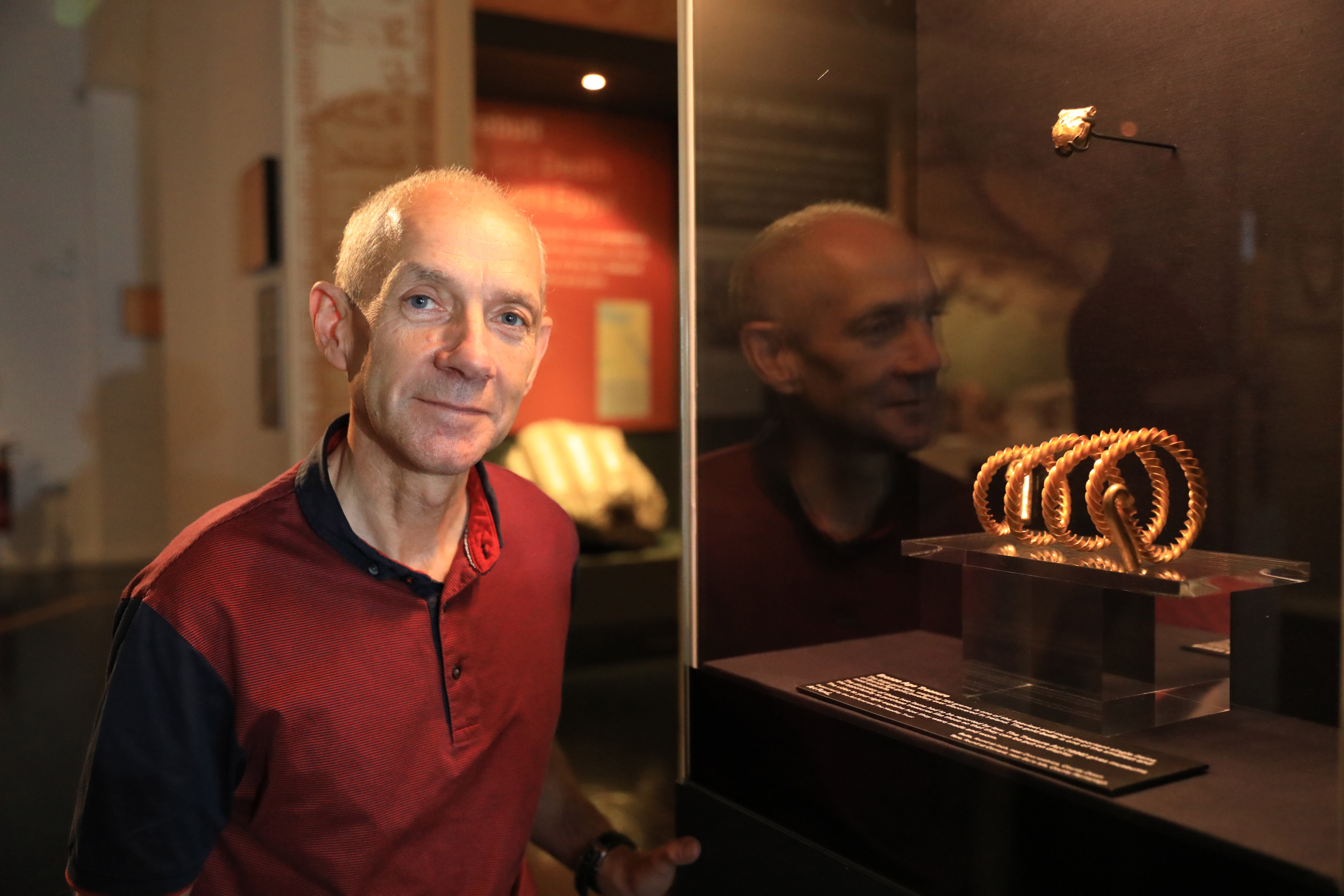Ireland recalled as the ‘El Dorado of western Europe’ for gold items
The description referred to the quality and quantity of gold work in Ireland during the Bronze Age.

Your support helps us to tell the story
From reproductive rights to climate change to Big Tech, The Independent is on the ground when the story is developing. Whether it's investigating the financials of Elon Musk's pro-Trump PAC or producing our latest documentary, 'The A Word', which shines a light on the American women fighting for reproductive rights, we know how important it is to parse out the facts from the messaging.
At such a critical moment in US history, we need reporters on the ground. Your donation allows us to keep sending journalists to speak to both sides of the story.
The Independent is trusted by Americans across the entire political spectrum. And unlike many other quality news outlets, we choose not to lock Americans out of our reporting and analysis with paywalls. We believe quality journalism should be available to everyone, paid for by those who can afford it.
Your support makes all the difference.Ireland has been recalled as the El Dorado of western Europe for the quality and quantity of goldwork during the Bronze Age.
The comment came as the first six of 10 cases of potential treasure were considered at Belfast Coroner’s Court.
They were the first treasure trove inquests to be heard in several years due to the coronavirus pandemic.
Items considered included a Bronze Age gold ring, a sleeve fastener, flat axes, an Agnus Dei pendant and medieval silver coins – all found by people using metal detectors with the permission of the landowner.
The final hearing of the day heard how Christopher Martin found the sleeve fastener around seven inches under the surface while using a metal detector in a field close to Narrow Water in Co Down on September 8, 2019.
It has been dated to around 3,000 years old, estimated to have been made between 950-800BC.
The item was described as “relatively small”, around 3cms in length, consisting of a semi-circular bow at either end, with a curved fastener.
Greer Ramsey, curator of archaeology at National Museums Northern Ireland, said it was a piece of prehistoric Bronze Age gold jewellery.
He described the gold content as 83%, with 12% silver and 4% copper.
“This is really, really good quality gold,” he said.
“There are probably in the region of 100 sleeves fasteners from Ireland, and it is an exclusively Irish type, we’re not finding these objects on the continent.
“The goldsmiths in Ireland had a good reputation for producing high quality gold work. Ireland at one stage was called the El Dorado of western Europe because of the quality and quantity of the gold work.
“The term sleeve fastener is an antiquarian term, and became more popular in the 1960s. The idea was that it maybe acted perhaps like a cufflink, used to go through two slits and hold the cloak closed together, but we don’t know exactly how it worked.”
Coroner Anne-Louise Toal described it as a very beautiful piece, and declared it as treasure.
Earlier, three lots of items found by another metal detector enthusiast, Ryan Shiels, were declared to be treasure.
He described how it has been a hobby for him for around six years, usually going out three days a week weather permitting.
On April 3, 2019, he found a piece of a Bronze Age gold ring in a field close to the Co Down coast just south of Downpatrick.
On April 10, in the same field, he found 12 medieval silver coins.
And when he returned to the same field on April 15, he found more silver coins.
He also found four axes in the townland of Corbally, Co Down on March 5, 2020 and February 18, 2022.
Mr Ramsey described the broken piece of the gold ring as like a broken section of a polo mint, adding it was analysed as 69% gold, 24% silver and 4% copper.
He said it was dated to around 1290-104BC and may potentially have been hair rings, as seen on wigs on Egyptian tombs or an earring or nose ring.
The axes were also dated to the Bronze Age.
Of the other items, Mr Ramsey said the 21 silver coins include 15 silver pennies marked with Edward II and six silver groats with Edward III. He said they dated between 1279-1377.
He said why coins were buried remains a matter of speculation, perhaps buried at times of trouble in times before banks.
He described Anglo-Norman settlement in the area, with a 12th century motte, and two medieval tower houses.
Meanwhile, the Agnus Dei pendant was found in Lisnamallard, Co Fermanagh on November 13, 2018.
Mr Ramsey described it as around 3cms in diameter bearing the symbol of the lamb of God, and likely to have been intended to be worn on a chain or piece of leather around the neck.
He said it was measured as having a silver content of around 89%, adding it was probably made around the 15th or the 16th century.
“Agnus Dei pendants were originally designed to hold the wax from what are known as pastoral candles… the candles symbolised the light of Christ and they were lit at Easter on Holy Saturday and extinguished on Easter Sunday. The wax was believed to hold some kind of symbolism and power,” he said.
“The pendant is intended to be sealed but when you shake it now it rattles a little bit so we are guessing the internal contents are part of the dried wax.
“Perhaps this was a pendant belonging to a pilgrim who was travelling to St Patrick’s Purgatory in Lough Derg, Co Donegal.”